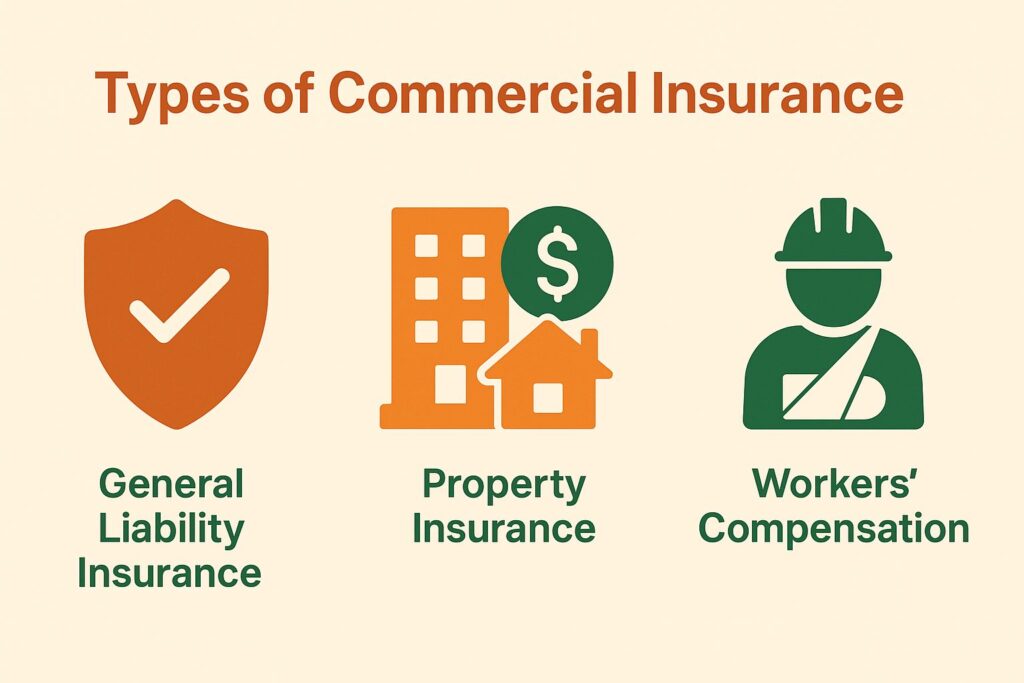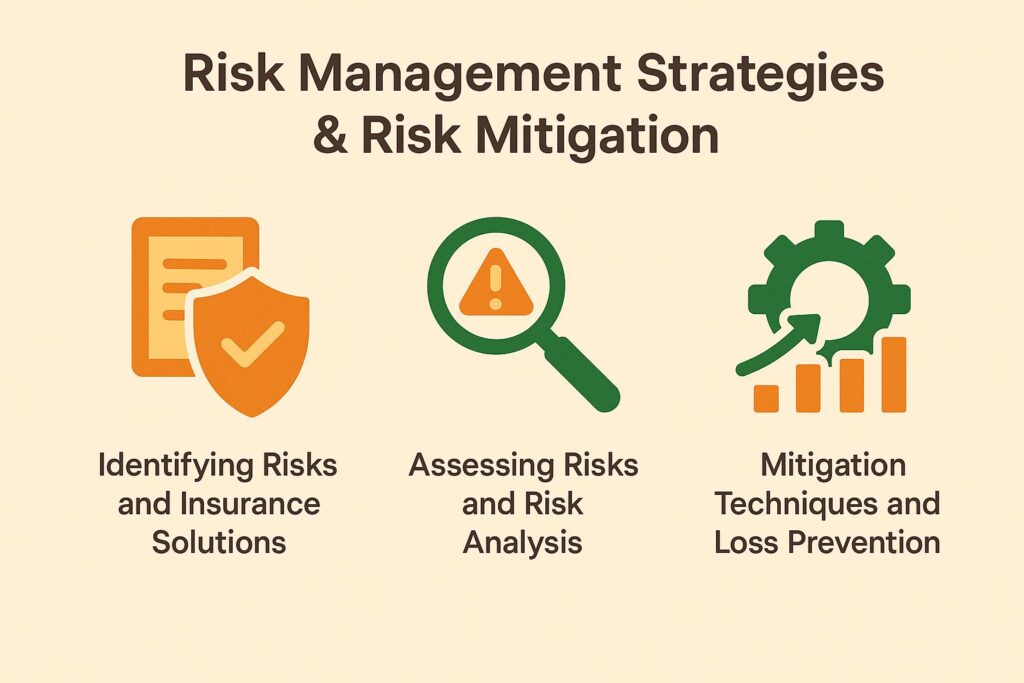
HRO Insurance – Commercial Insurance and Risk Management
In a world full of uncertainties, protecting your business is necessary, not optional. HRO Insurance provides a mix of business insurance and risk control to safeguard your investments and maintain steadiness. You will look into different kinds of insurance, including general liability and workers’ compensation, and find ways to handle risks effectively. Learn how to choose the correct policy and handle the claims process. Ready to fortify your business against the unexpected? Let’s dive in!
Definition and Importance of Insurance Solutions
HRO Insurance, or Human Resource Outsourcing Insurance, protects businesses from various risks associated with outsourcing human resource functions, ensuring regulatory compliance and financial stability.
This type of insurance is critical for managing liability risks such as employment practices liability, misclassification of employees, and regulatory compliance gaps.
For example, if a terminated employee files a wrongful termination lawsuit, HRO Insurance can cover legal fees and settlements.
Using tools like HR software solutions, such as Gusto or Zenefits, can simplify compliance management, making it easier to follow labor laws.
By using HRO Insurance along with strong HR management tools, companies can reduce major financial risks and safeguard their reputation, ensuring business viability.
Overview of Commercial Insurance and Risk Exposure
Commercial Insurance encompasses various policies designed to protect businesses from financial losses due to unforeseen events such as accidents, theft, or natural disasters, addressing key risk factors.
Key types of commercial insurance include:
- General liability coverage
- Property
- Workers’ compensation
- Professional liability
General liability helps cover claims from others, usually offering coverage amounts between $1 million and $5 million, providing broad protection.
Property insurance protects physical items and can be adjusted to fit particular requirements. Premiums can vary based on factors like business size, location, and industry risk.
Insurance brokers play a key role by reviewing a company’s needs, helping compare quotes, and finding individual plans that match budget limits while ensuring adequate insurance coverage.
Types of Commercial Insurance
Knowing the different kinds of Commercial Insurance is important for businesses to have full protection against possible risks and liabilities.

General Liability Insurance and Risk Management
General Liability Insurance protects businesses from financial loss due to third-party claims of bodily injury, property damage, and personal injury, supporting strong asset protection.
This coverage typically has limits ranging from $1 million to $2 million per occurrence and $2 million to $4 million in total for the policy period.
Premiums usually range between $400 and $1,500 annually, depending on factors like business size and industry. For instance, a small bakery may face an average premium of $800, while a construction company could pay up to $1,200 due to higher risk.
Common claims include slip-and-fall accidents at your business premises or damage to a client’s property during a service.
Property Insurance and Asset Valuation
Property Insurance covers physical items against risks such as fire, theft, or vandalism, and includes full asset valuation. It is important for businesses of any size.
Knowing what is covered under Property Insurance is important. Common coverages typically include:
- Building Coverage: Protects the physical structure; essential for commercial real estate.
- Contents Coverage: Covers business personal property, including equipment and inventory.
- Business Interruption Insurance: Compensates for lost income during repairs.
Average costs range from $500 to $3,000 annually, depending on property value and coverage limits. For instance, small retail stores may pay around $750 yearly for adequate protection, while larger operations might incur premiums over $2,000.
Workers’ Compensation and Insurance Claims
Workers’ Compensation Insurance is critical as it covers medical costs and lost wages for employees injured on the job, ensuring workplace safety and compliance with industry standards.
Employers are legally required to carry workers’ compensation insurance, with average premiums ranging from $0.75 to $2.74 per $100 of payroll, depending on the industry risk level.
This insurance protects employees by paying their medical bills and replacing lost wages, and it also protects employers from lawsuits related to workplace injuries.
Properly managing these policies can lead to lower premiums, so businesses should regularly review their payroll classifications and implement workplace safety programs to reduce claims.
Risk Management Strategies and Risk Mitigation
It’s important for businesses to set up risk management plans to identify, assess, and deal with potential risks that could impact their operations, prioritizing risk mitigation. To better understand how digital tools can support these efforts, you might want to consider leveraging technology for efficient management.

Identifying Risks and Insurance Solutions
Finding risks means carefully spotting possible dangers that might impact your business activities, allowing for early handling.
To find risks effectively, consider interviewing employees to get their direct thoughts on possible problems.
Use surveys to collect more employee opinions on risks they notice in daily tasks. Tools like RiskWatch can simplify the assessment process, allowing you to easily monitor and handle identified risks.
Employing a Risk Assessment Matrix allows you to categorize risks based on their likelihood and impact, ensuring that you prioritize effectively.
These methods help you identify and deal with risks before they become bigger problems, ensuring a proactive approach to risk exposure.
Assessing Risks and Risk Analysis
Assessing risks quantifies their potential impact and likelihood, allowing businesses to prioritize their risk management efforts effectively, facilitating strategic risk management.
To carry out a complete risk assessment, use both descriptive and numerical approaches.
Qualitatively, perform a SWOT analysis to identify strengths, weaknesses, opportunities, and threats related to specific risks.
For quantitative analysis, tools like RiskMap can allow you to evaluate risks based on specific measures, such as how serious they are and how often they occur.
Start by listing potential risks, categorize them using SWOT, and then apply RiskMap to assign numeric ratings. This dual approach provides a balanced view, ensuring that both tangible and intangible factors are considered in your risk management strategy.
Mitigation Techniques and Loss Prevention
Mitigation techniques involve implementing strategies to reduce the likelihood and impact of identified risks, enhancing overall business resilience and supporting loss prevention.
Key strategies include creating detailed safety programs, which usually involve regular training sessions to teach employees about recognizing risks and emergency procedures. For instance, a factory might implement quarterly safety drills.
Think about buying insurance policies that match your business’s risks to help cover costs during unexpected events.
Regularly evaluating risks, along with these training programs and insurance measures, helps build a strong system that reduces risks and encourages a focus on safety and readiness among employees.
Choosing the Right Coverage and Policy Documentation
Picking the appropriate insurance involves examining what your business requires and being aware of the different insurance choices. This includes reading and knowing the details in policy documents. It’s important to integrate insurance considerations within broader business operations, including efficient HR management. Learn more about simplifying business operations through effective HR management.
Reviewing Business Needs and Risk Management Plan
Assessing your business needs means examining your processes, resources, and potential risks to decide on suitable insurance coverage, using a strong risk management plan.
Begin by carefully examining how your business is currently running. Use a Business Impact Analysis (BIA) template to find important assets and possible risks.
Gather data on past incidents to support your findings. For example, if your equipment has broken down, make sure your insurance covers business interruption.
Tools like SWOT analysis can help highlight vulnerabilities, enabling you to prioritize which areas require more coverage. Collaborate with an insurance advisor to tailor policies that align with your unique organizational needs.
Comparing Policies and Insurance Market
Comparing insurance policies involves assessing coverage limits, exclusions, premiums, and the reputation of the insurance provider to find the best fit in the insurance market.
To effectively compare insurance policies, use online tools like CoverWallet or Policygenius, which provide side-by-side quotes based on your specific needs.
Start by gathering at least three quotes, focusing on key features like deductibles and customer service ratings. Read customer reviews to understand real-world experiences with claims processes.
Prioritize policies that offer the coverage you need at a reasonable premium, ensuring you’re not sacrificing quality for cost. Strive for complete coverage that offers both value and protection.
Claims Process in HRO Insurance and Claims Management
Knowing how the claims process works in HRO Insurance is important to resolve any claims quickly and correctly.
Filing a Claim
To file a claim, you need certain documents and a clear grasp of the insurance policy terms to make the process easy, facilitating effective claims management.
To start, gather necessary documents like your policy number, photos of the damage, and any relevant receipts for repairs.
The time it takes to process claims can differ. The time it takes can range from a few days to a few weeks, depending on the insurance company’s workload and the claim’s complexity.
Insurance adjusters evaluate damage and decide on the compensation. Talk to them often to get updates on your claim and provide all necessary details on time.
Claim Resolution and Claims Adjustment
The process of resolving claims includes examining the claims that have been submitted, looking into the details, and deciding based on what the policy covers, focusing on liability coverage and risk assessment.
To speed up claim processing, policyholders should provide complete documents, including photos of damages, receipts, and clear descriptions of the incident, ensuring they understand their coverage limits and exclusions.
Stay in touch with your insurer; contact them each week for news regarding policy renewal and premium costs.
Using claims management tools like AppTree or ClaimX can make tracking and documentation easier, aiding in strategic risk management and indemnity verification.
Make sure to ask clear questions about your claim to show interest and learn about the timelines, including any potential effects on business interruption insurance.
Make sure your contact details are current to allow easy communication.
Emerging Risks in the Insurance Market
Emerging risks, such as cyber threats and environmental liabilities, pose new challenges for businesses and require innovative insurance solutions, including risk mitigation and coverage analysis.
Businesses are increasingly investing in cyber insurance to mitigate risks associated with data breaches. For instance, a medium-sized tech firm recently adopted coverage that includes ransomware protection, reflecting the industry’s growing awareness of digital vulnerabilities and the necessity for commercial insurance and insurance audits.
Companies that face risks from environmental issues like oil spills or toxic waste are looking for specialized environmental insurance policies. This change in coverage options helps organizations protect their assets and encourages active risk management strategies, keeping them compliant with regulations and protecting their reputations through effective loss control and reinsurance strategies.
Innovations in Insurance Technology and InsurTech
New technology in insurance, like AI for evaluating insurance applications and blockchain for handling claims, is changing the way insurance works by improving risk exposure analysis and coverage recommendations.
AI tools like ZestFinance look at large amounts of data to carefully evaluate risk, helping policies get approved more quickly and in line with actuarial science.
Meanwhile, blockchain technology, exemplified by projects like Etherisc, enables secure, transparent claims processing, minimizing fraud, enhancing trust with policyholders, and supporting efficient claims adjustment.
Digital platforms like Lemonade use chatbots and computer-based processes to make customer interactions easier and speed up claim processing times, supporting business continuity planning.
By using these technologies, insurers can work more effectively and greatly improve the experience for customers, supporting business viability and aligning with industry standards.
About the Author
Ellen Westbrook is a Stanford University graduate with a bachelor’s degree in human resources and psychology. She’s the owner of a successful HR and payroll outsourcing firm in Colorado and a contributing writer for HR Costs. With 17 years of experience, Ellen helps businesses reduce risk, manage HR more efficiently, and grow with confidence.

